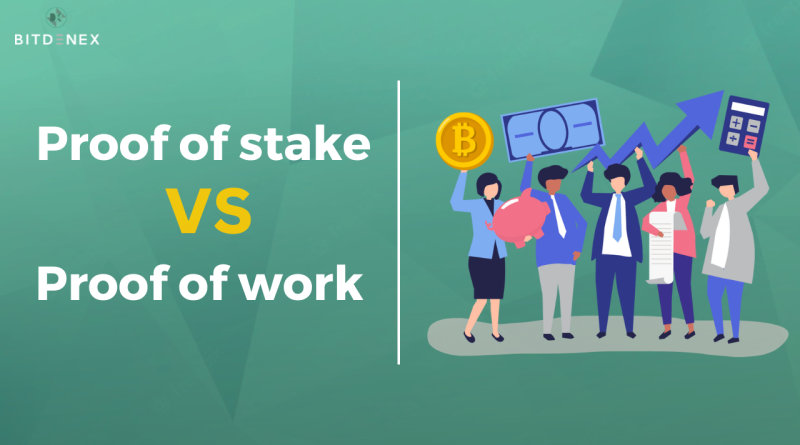Proof of Work vs Proof of Stake: Which is Better?
INTRODUCTION:
The start of the decentralization ecosystem was to ensure that there is no duplicity taking place while ensuring there is no need for third-party involvement. This goal was achieved through the development of a ‘consensus mechanism’, which helps legitimize these transactions.
WHAT IS PROOF-OF-WORK
Proof-of-work was the most critical consensus mechanism invented in 1993 to combat spam and other service abuses. Proof-of-work became official in 1997. Satoshi Nakamoto used it in developing Bitcoin after it was heavily unused for many years. The BTC blockchain was secured by using this consensus mechanism to form a network between peers. This mechanism determines the likelihood of receiving a reward based on the amount of work generated. The greater the output of the work, the greater the chances of receiving the bonus.
Miners of crypto must solve cryptographic puzzles. Although this puzzle is difficult to solve, it is simple to verify. Once the solution is discovered, it is broadcasted to the network and verified by the other nodes, after which the miner receives the reward.
ADVANTAGES AND DISADVANTAGES OF PROOF-OF-WORK
ADVANTAGES
- A higher level of security
- Miners can earn crypto rewards with it
- Provides a decentralized method for verifying transactions
DISADVANTAGES
- High consumption of energy.
- Expensive fees with low transaction speed.
- Expensive equipment required for mining
WHAT IS PROOF-OF-STAKE
Instead of having a competition between miners to decide which block to add, validators that are equivalent to miners in PoW are chosen to identify a block based on the number of tokens held by them in the proof-of-stake system.
The amount “staked” by the user replaces the work done by a miner in PoW. This staking structure secures the network because a potential participant must purchase the crypto asset and hold it until he is chosen to form a block in order to earn rewards. Proof of Stake is similar to depositing money in a bank account, where interest is generated based on the duration and amount held.
ADVANTAGES AND DISADVANTAGES OF PROOF-OF-STAKE
ADVANTAGES
- Do not require expensive equipment for participation.
- Fast and inexpensive transaction speed.
- Energy-efficient.
DISADVANTAGES
- When compared to proof-of-work, it has a lower level of security.
- Transaction verification can be influenced by validators with large holdings.
- There are a few PoS cryptos that require locked-up staked coins for a certain period of time.
PROOF OF STAKE VS PROOF OF WORK – WHICH IS BETTER?
In short, there are a few fundamental differences that set the Proof of Work and the Proof of Stake apart from each other. Below mentioned are some of those fundamentals:
- Cardano (ADA) and Algorand (ALGO) are some of the biggest networks employing this consensus mechanism, while PoW is the first generation of consensus mechanisms that was born with Bitcoin. Ethereum, one of the largest smart contract blockchains out there, is slated to move from PoW to PoS.
- PoS works on the principle of staking, which means that the participant must solve a complex mathematical problem in order to verify the block.
- As a result of the difference in principles, PoW requires a lot more energy to verify one block, whereas PoS uses a tiny fraction of that energy.
- PoW is a slower process due to the way it works, while PoS is an order of magnitude faster in verifying transactions due to the way it performs consensus.
Pros
| Proof of Work | Proof of Stake |
| A block’s transactions are added using energy-intensive operations compared to Proof of Stake. | Comparatively high energy efficiency to power plants |
| It provides better decentralization since the authority to manage transactions is distributed to miners. | Transactions are processed dramatically faster, |
| PoW is less likely to be attacked as mining and verifying transactions require expert computational knowledge. | Doesn’t require special equipment like ASIC chips required for mining in PoW |
Cons
| Proof of Work | Proof of Stake |
|---|---|
| Energy-intensive power plants produce a large carbon footprint. | PoW is not as secure as PoW in terms of network security |
| PoW operations require expensive equipment and resources. | A large number of staked coins can influence the verification process |
| Network congestion is caused by high network fees and slow processing times. | The coins in PoW must be locked in the smart contract and may have a lock-in period |
Use this link to sign up and start trading with 0.20% trading fees at Bitdenex Exchange.

